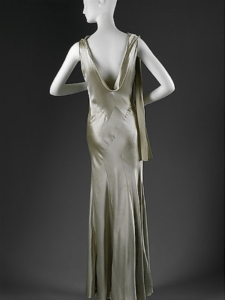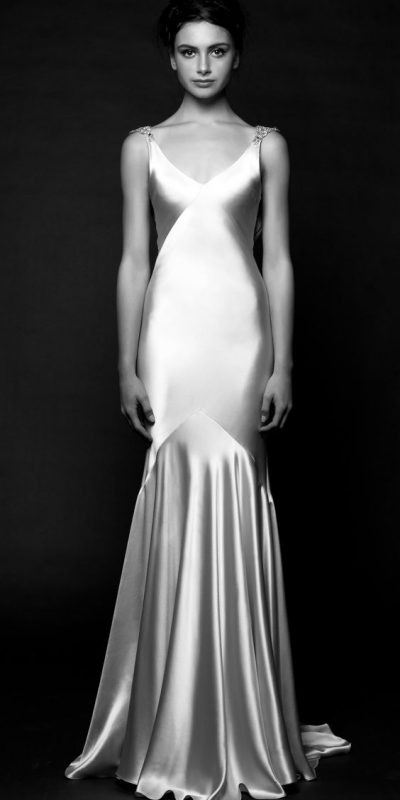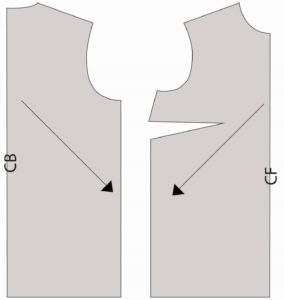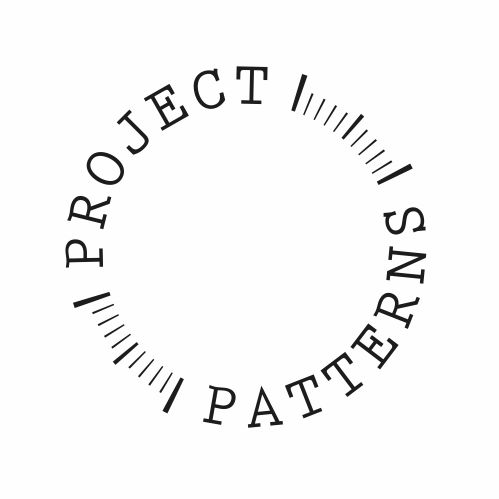Are you dreaming of gorgeous slinky gowns or beautiful soft drapes? Well then, you’re probably dreaming a bias cut dream!
In short, cutting fabric on the bias means cutting the fabric on a 45 degree angle to the natural grain…still confused? Here’s an example…
The grain line on a pattern normally runs from head to toe but on a bias cut garment it would run diagonally across the body at a 45 degree angle as you can see below…

We have the wonderful Madeleine Vionnet to thank for developing the genius of bias cutting as we know it today.

A French fashion designer who was responsible for freeing the world from corsets and instead introducing fluid gowns that clung to and celebrated the female the body.
She is often referred to as “the queen of draping”, a name that is wholly appropriate as we are still being inspired and abiding by her rules for bias cutting and draping today.
I could go on about her amazing-ness all day but I won’t so if you want to know more about her, check out this Business of Fashion article dedicated to her.
Cutting on the Bias gives a woven fabric uniques properties. It essentially allows the fabric to have a natural stretch so eliminates the need for a lot of shaping and construction that we normally need for woven fabrics.
However, it’s important to remember that as the bias grain stretches the width of your fabric decreases. This fluidity is what allows the fabric to mould to the body and drape so Beautifully.
In the video below you can see the fabric has no natural stretch when pulled on the warp or weft. But when I pull it on the bias grain it grows by 5cm!

This Sarah Janks dress is a great example of bias cutting. You can see that there are no bust or hip darts and no waist seam. The fabric sits flat and simply moulds around the body
While Bias cut dresses or tops are elegant and beautiful it’s worth noting how difficult it is to sew fabric that is on the bias. Here are a couple rules to follow when making patterns and sewing bias garments:

Traditionally we use softer fabrics for bias garments but it’s also common in tailoring to put the under collar on the bias to allow natural movement and ease around the neck.
You should consider using the bias grain on any pattern piece that needs some natural movement or moulding.
Here are some examples of fabrics that react well to bias cutting:
So that’s my quick synopsis on the infamous bias cut, keep an eye out for more bias cutting tutorials coming out soon!

